Think you know all the dog breeds around the world? We challenge you to check out this list of dog breeds that start with A — and we bet you’ll find some new discoveries like the Aksaray Malaklisi or the Ariegeois!
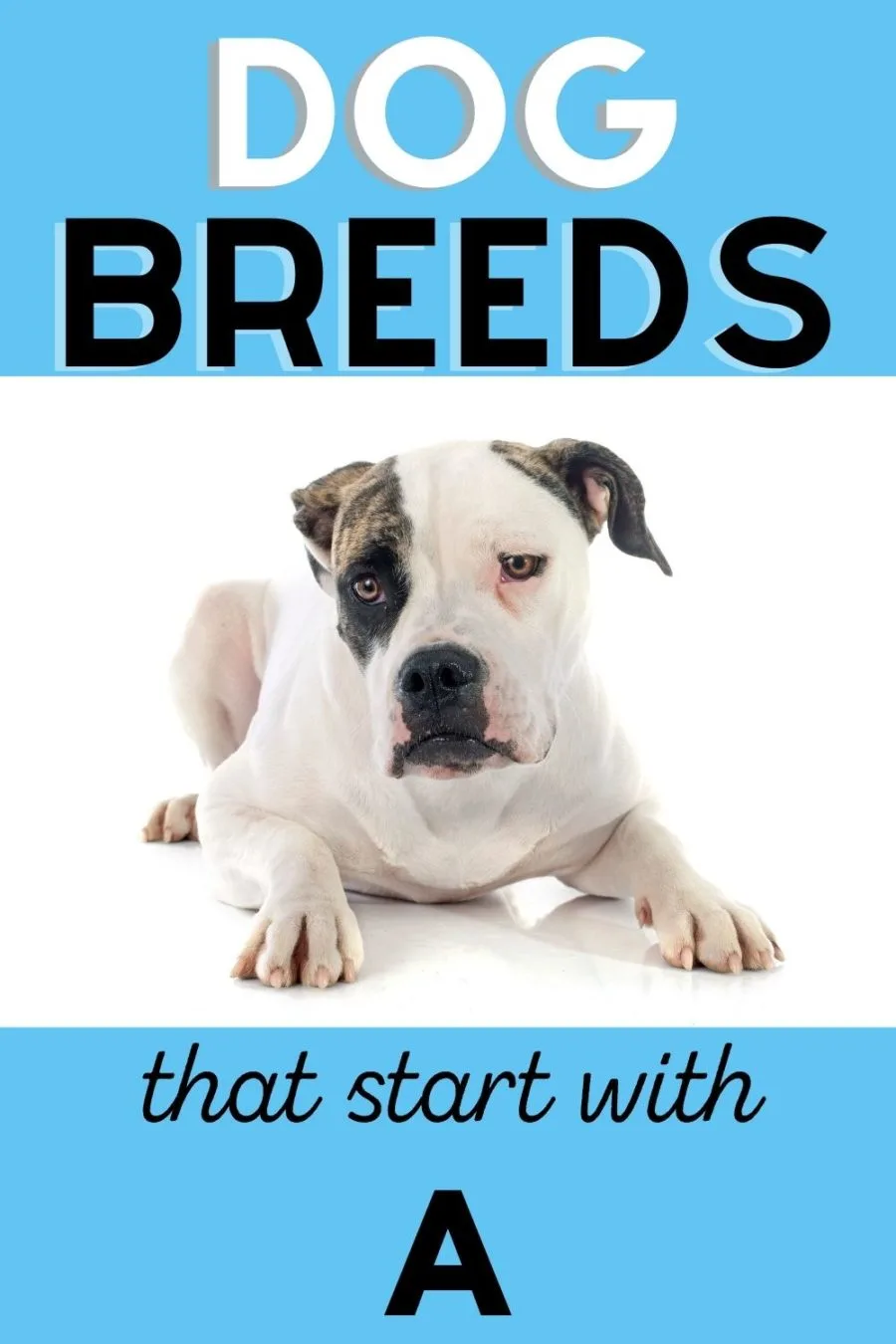
This list features purebred dogs starting with A; for crossbreeds starting with A, don’t miss our crossbreed dog breeds list! At the bottom of this page, you’ll find links to every letter so you can discover more dog breeds from A-Z.
Affenpinscher
In the language of the breed’s origin, “Affen” means “ape” or “monkey,” which is where the toy dog’s second moniker “monkey terrier” is derived. Created to kill rodents, since its start in the 1600s the Affenpincher has been promoted from rat catcher to beloved family member.
The breed gained prominence in 2013 when Banana Joe became the first Affenpinscher to win top dog honors at the Westminster dog show.
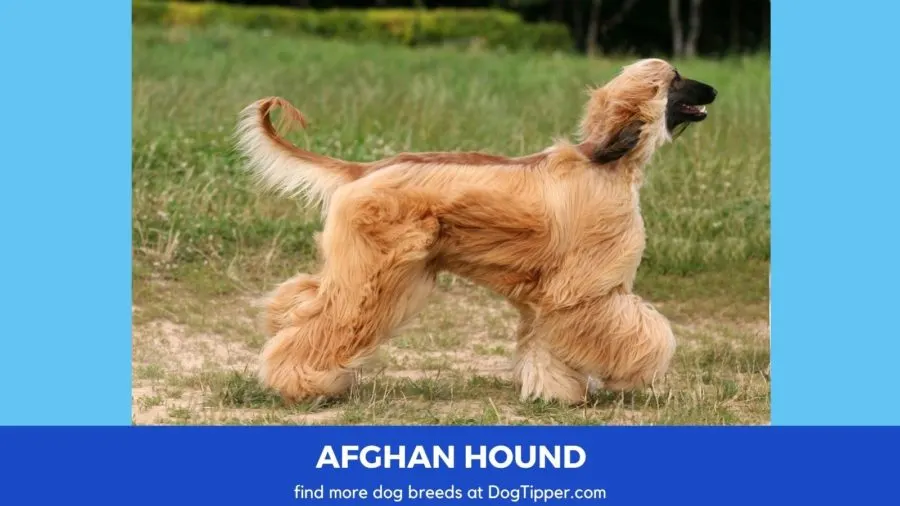
Afghan Hound
Although originally it was thought this elegant sighthound had roots that dated back to the days of the Egyptian Pharaohs, it most likely originated as a breed developed by hunters in the isolated mountains of Afghanistan where it was used for hunting, often alongside falcons.
Following the 19th century Indian-Afghan wars, soldiers returned to Europe with the dogs and they were known as Barukhzy Hounds or Persian Greyhounds.
Africanis
Known by a number of names (African Dog, Bantu dog, Hottentot Hunting dog, Katali, Khoekhoe Dog, Tswana Dog and Zulu Dog), these indigenous dogs have been a fixture in the South African landscape for more than 7,000 years.
Once derisively thought of as “mutts” living in feral packs, the Africanis have been looked upon in a new light since the establishment of The AfriCanis Society in 1998.
Aidi
Sometimes referred to as the Berber Dog in reference to the North African tribe to which the breed is most closely associated, the Aidi (whose name is the Berber word for dog) are skilled hunters and defenders of both flocks and people.
Airedale Terrier
Known as the “King of Terriers,” the Airedale is the tallest terrier breed. Tracing its origins to Black and Tan and the old English Terriers as well as Otterhounds, these dogs were designed for water hunting skills. First called Waterside Terriers, the name change to Airedale took place in 1878 to honor the Aire River and its valley where the Airedale Terrier originated.
Akbash
A protector of both flocks and livestock, the name Akbash means “white head” (alluding to the dogs’ white coat) in the native language of the breed’s birth, Turkey.
A fixture in the transcontinental country since 750 BC, this faithful and intelligent breed did not appear in the United States until the 1970s.
Akita
A breed with roots in northern Japan, the Akita (also known as the Akita Inu and the Japanese Akita) has a history that contains both horror and honor. Once used for dog fighting, the Akita also held pride of place as protectors of Japanese royalty and four-legged friends of Samurai warriors. Revered in its homeland, the Akita is a symbol of good luck, and figurines featuring the breed are often given as gifts.
The Akita may be best known to those who have read Hachiko Waits or watched the movie Hachi: A Dog’s Tale. The true story of the bond between professor Ueno and the dog who waited patiently every day at the Shibuya train station for his favorite human to return from work– an act of loyalty which continued nine years after Ueno’s sudden passing– defines the breed’s love of family. To those not within their immediate circle, however, the breed can show the stubborn and territorial sides of their nature.
Aksaray Malaklisi
One of the world’s oldest dog breeds, this Turkish livestock guardian takes its name from the area of its origin, the Anatolian Aksaray province.
Sometimes referred to as the Turkish Mastiff or Central Anatolian Shepherd, the Aksaray Malaklisi– a massive dog that stands approximately 29 – 32 inches tall– shares DNA with the Kangal.
Alano Español
A breed with a brutal past, the dog sometimes referred to as the Spanish bulldog was once forced to fight bulls in the ring, a gruesome form of blood sport which was immortalized in etchings by Francisco Goya.
Once bull baiting was declared illegal, the breed was neglected to the point that the Alano Espanol was believed to be extinct in the early 1960s. The small population that remained rallied, however, with help from breeders in the 1990s.
Alapaha Blue Blood Bulldog
A rare American-born breed, this guard dog can trace its roots back to the 18th century, when their forebearers the Olde English Bulldog arrived in the southern US to forcibly compete in blood sports.
Alapaha Blue Blood Bulldogs have also been known as Otto (the name of a stud dog who helped to establish the breed), Catahoula Bulldog, Cowdog and Silver Dollar.
Alaskan Husky
A native of The Land of The Midnight Sun, a number of breeds have helped in the creation of the Alaskan Husky, including the Alaskan Malamute and the Siberian Husky, along with dogs whose DNA contributed their special abilities, such as the Pointer, Greyhound and Saluki for speed and the Great Pyrenees and Anatolian Shepherd for endurance.
Primarily known as sled dogs, the Alaskan Husky has gained fame through the annual Iditarod Trail Sled Dog Race.
Alaskan Klee Kai
A relatively new (1970s) breed fashioned from the Alaskan Husky, the American Eskimo Dog, the Siberian Husky and the Schipperke, the name Alaskan Klee Kai comes from an Inuit word meaning “little dog.”
Ranging in size from Toy (up to 13 inches in height) and Miniature (13 – 15 inches tall) to Standard (15 – 17 inches tall), this companion animal is highly intelligent and curious.
Alaskan Malamute
The official state dog of Alaska, this Arctic breed (whose lineage dates back 5,000 years) have been used as working sled dogs due to their strength and endurance. The Alaskan Malamute is known for hauling precious metal during the Gold Rush, transporting life-saving diphtheria antitoxin serum to Nome in 1925, delivering supplies to troops in France during World War I and carrying weapons during world War II.
Today the breed often use their abilities to bring smiles to people’s faces through mushing and skijoring.
Alopekis
A breed which finds itself on the brink of extinction, the Alopekis can still be spotted in Northern Greece. This small, athletic and sweet-natured dog has an ancient origin, with archaeological digs uncovering artifacts decorated with the breed’s fox-style features.
Alpine Dachsbracke
Known as ALPENLÄNDISCHE DACHSBRACKE in their native Austria, this tiny but mighty breed made its debut in the mid 19th century.
Taking many of its features from the Dachshund, which was bred with an Austrian black and tan hound to create the scent hound, the Alpine Dachsbracke was once a favored hunting companion for German royalty thanks to the breed’s ability to sniff out even a cold animal trail.
American Bulldog
Also known as Old Southern White Bulldog, Hill Bulldog, Country Bulldog and English White Bulldog, the American Bulldog (which is often mistaken for the Pit Bull) shares DNA with the Olde English Bulldog.
Initially used to rid farms of feral hogs, the breed was facing oblivion by the onset of the second World War. Having rebounded due to breeding efforts, today the American Bulldog, although still a working dog, has also become much-loved members of forever families.
American Bully
A new breed on the block, the birth of this American-bred companion dog took place in the 1980s. Most closely associate in the mind of the public with the American Pit Bull Terrier, this gentle-natured breed is a combination of American Bulldog, English Bulldog and Olde English Bulldog.
American Cocker Spaniel
American Cocker Spaniels were derived from English Cocker Spaniels in the late 1800s; the smaller size was designed to hunt quail and other small birds. In 1935, the AKC separated the American and English cockers as two different breeds. Today the American Cocker Spaniel is divided into three groups: black, particolor, and ASCOB (Any Solid Color Other than Black).
Although categorized as a sporting dog, today this breed is known more for winning awards and hearts than for tracking animals. Related to the first Spaniel to walk on American soil following a voyage aboard the Mayflower, the modern American Cocker Spaniel also holds a place in history, with members of the breed promenading through the halls of 1600 Pennsylvania Avenue during the presidencies of Harry S. Truman and Richard Nixon. Popular in the dog show circuit, the breed has earned top dog honors at the Westminster dog show on several occasions.

American English Coonhound
This deep-chested dog was developed in the US from English Foxhounds for use on fox hunts. Eventually the breeds evolved to hunt foxes by day and raccoons by night, and it was known as the English Fox and Coonhound. Today this friendly dog is sometimes known as the Redtick Coonhound.
American Eskimo Dog
By adding “American” to the name of this German-bred companion dog, the breed was able to avoid the public’s anger during World War I.
Descended from the German Spitz, the fluffy-furred dog has a unique history, with many past members of the breed either working as circus performers or sold to attendees whenever a circus came to town.
Other names for the American Eskimo Dog are the Cloud Spitz, the American Spitz and the German Spitz.
American Foxhound
Not only was George Washington the father of our country, by breeding Grand Bleu de Gascogne with English Foxhounds he is also considered the father of the American Foxhound, which is perhaps the first dog dog breed to originate from the United States.
According to The American Kennel Club, there are four distinct varieties of the baying scent hound: field-trail hounds, fox-hunting hounds, trail hounds and pack hounds.
Developed for chasing foxes, today the American Foxhound remains a very energetic breed. With its high prey drive and desire to run for long distances, this is also a breed that is best walked on leash.
American Hairless Terrier
Originating in Louisiana, this relative of the Rat Terrier made its debut in 1972. Prone to sunburns, American Hairless terrier pups are born with a bit of fuzz which sheds by the time the puppy is six weeks old. Members of the breed are known for being playful, curious people pleasers.
American Pit Bull Terrier
Nicknamed “America’s Dog,” the Pit Bull holds a place of honor in history as both symbols of national loyalty as well as faithful companions, with Helen Keller and President Woodrow Wilson among the many prominent figures who welcomed pit bull terriers into their hearts and homes.
In recent years, however, the reputation of so-called bully breeds has been damaged due to dog fighting, unwilling affiliation with gangs and irresponsible guardianship.
Sadly, many locations have responded with Breed Specific Legislation (BSL) outlawing pit bulls and pit bull-type dogs.

American Staffordshire Terrier
Often mistaken for the American Pit Bull Terrier, this breed–often known as AmStaff–is known as loyal and intelligent. Unfortunately the breed has been hounded in recent years by breed-specific legislation (BSL), which places restrictions on the ownership of certain dogs.
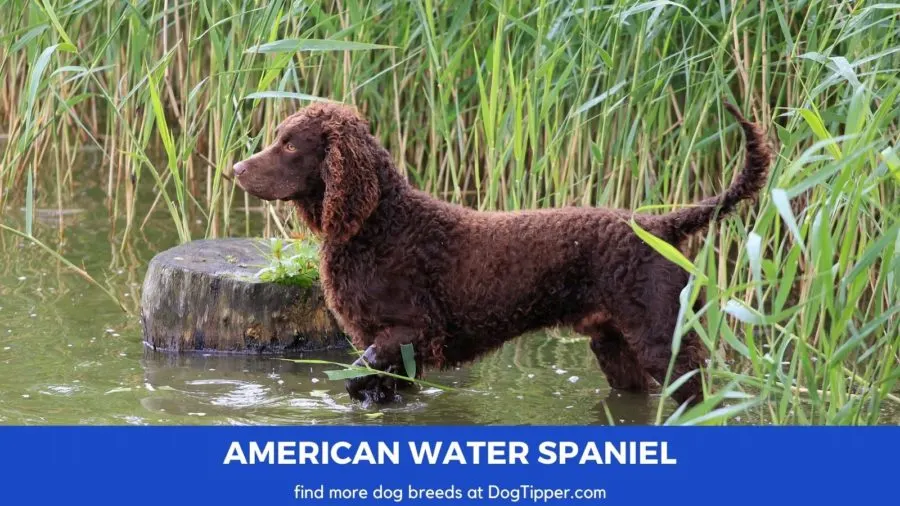
American Water Spaniel
The state dog of Wisconsin, this hunting dog has a waterproof coat and a keen nose, allowing it to hunt through rough terrain and retrieve a variety of game from both land and water. The medium-sized dog was specially bred to be able to be carried by hunters in small boats. The breed has been found in the Great Lakes region since the 1800s and was recognized by the AKC in 1940.

Andalusian Hound
This Spanish hound dog (known as Podenco andaluz in Spanish) is often used to hunt rabbits. It has many similarities to the Portuguese Podengo breed, so many in fact that it is not recognized by many international breed associations as a separate breed.
Anglo-Français de Petite Vénerie
Don’t let the word “petite” fool you– the Anglo-Francais de Petite Venerie is a medium-sized scenthound that originated in France to hunt for small quarry.
Once known as the Petite Anglo-Francais, the breed was developed by the pairing of English Foxhounds with the Poitevin and the Petit Bleu de Gascogne.
Accustomed to outdoor life, the Anglo-ffancais de Petite Venerie are seldom thought of as members of the family, but rather working dogs.

Appenzeller Sennenhund
Originating in Switzerland, the name of this herding dog (which is also known as the Appenzeller Cattle Dog) is an homage to the Senn herders of the Swiss Alps.
This highly energetic breed shares traits with fellow Sennenhunds the Bernese Mountain Dog, the Entlebucher Mountain Dog and the Greater Swiss Mountain Dog.
Although mainly seen in its native land, the breed has gained popularity in the United States, with the Appenzeller Mountain Dog club of America helping to educate the public about the dog’s qualities.
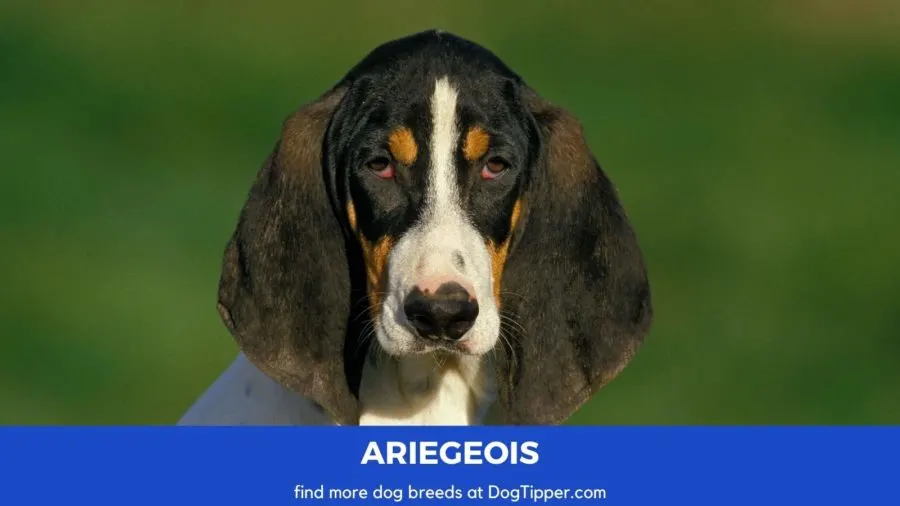
Ariegeois
First bred in France in 1912, this scenthound hunts rabbit, deer and boar mainly in the area of its origin, the mid-Pyrenees region.
Recognized for its short white coat dotted with dark markings, members of this breed are equally at home indoors in a family setting as when they are outdoors hunting.
Armant
Named in honor of the Egyptian town which boasts as being the birthplace of the breed, the Armant is also referred to as the Egyptian Sheepdog, Ermenti and the Harawa dog.
A farm dog, the Armant is believed to be the offshoot of European dogs who were brought to Egypt in the 1800s.
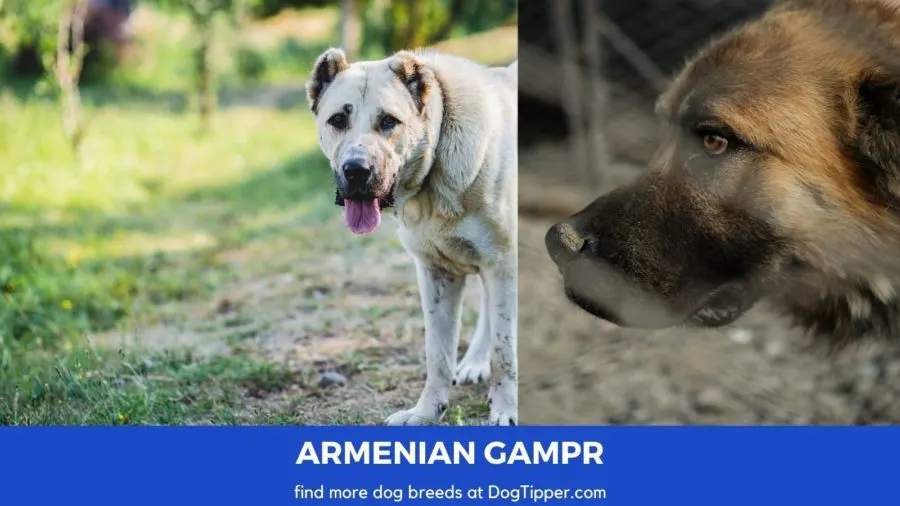
Armenian Gampr
A breed with a propensity to protect its charge, whether that be livestock or people, at approximately 110 pounds the Armenian Gampr is an impressive sight.
The transportation of a number of Armenian Gampr dogs to Russia in the 1920s brought about the development of the Caucasian Shepherd dog.
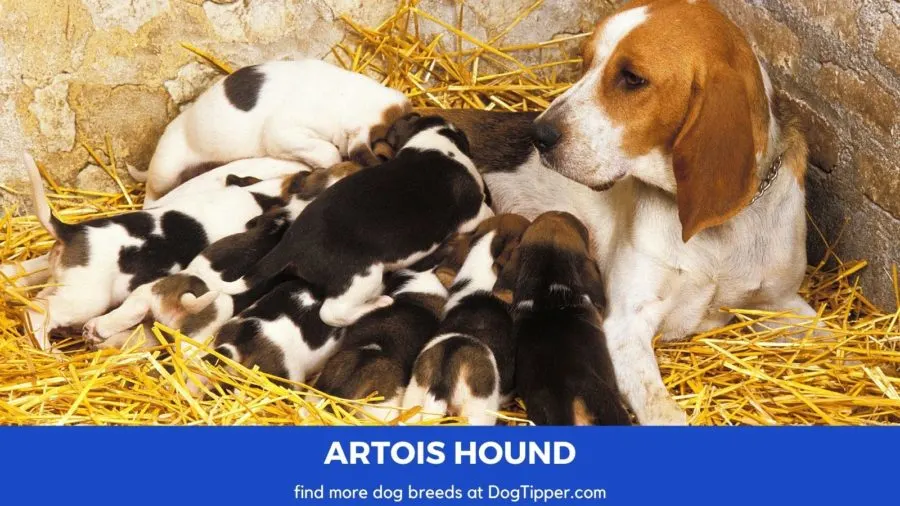
Artois Hound
Also known as Chien d’Artois, Picard and Briquet, this rare breed boasts a strong DNA bond with the Bloodhound.
Originating in France, the centuries-old scent hound breed faced extinction before rebounding in the 1970s.

Australian Cattle Dog
Also known as the Blue Heeler, the Red Heeler and the Queensland Heeler, this breed from The Land Down Under is a descendant of the Dingo, who was paired with the Blue Merle to create the Cattle Dog’s first incarnation, Halls Heelers.
An intelligent, energetic working dog, its name comes from the dog rounding up cattle by nipping at the animals’ heels.
The breed gained fame thanks to an Australian Cattle Dog named Bluey, who– having lived to the age of 30– holds a place in the Guinness Book of World Records as the oldest dog.

Australian Kelpie
Proud of its standing as “the birthplace of the Kelpie,” a monument to the breed stands guard outside of the Town Hall in Casteron, Victoria.
A Scottish word meaning ‘water sprite,’ the breed was named in honor of the British working collie who brought the breed into being.
Perhaps the most well-known Kelpie was Red Dog, a nomadic Kelpie/cattle dog who wandered through western Australia’s Pilbara region in the 1970s. Becoming a beloved part of the community, Red Dog was made a member of the Dampier Salts Sport and Social Club, the Transport Workers’ Union, and was gifted with his very own bank account at the Bank of New South Wales.
Although he crossed Rainbow Bridge in 1979, the memory of the Kelpie mix lives on through a statue of the “Pilbera Walker” erected in the town of Dampier, and in the 2011 movie Red Dog.
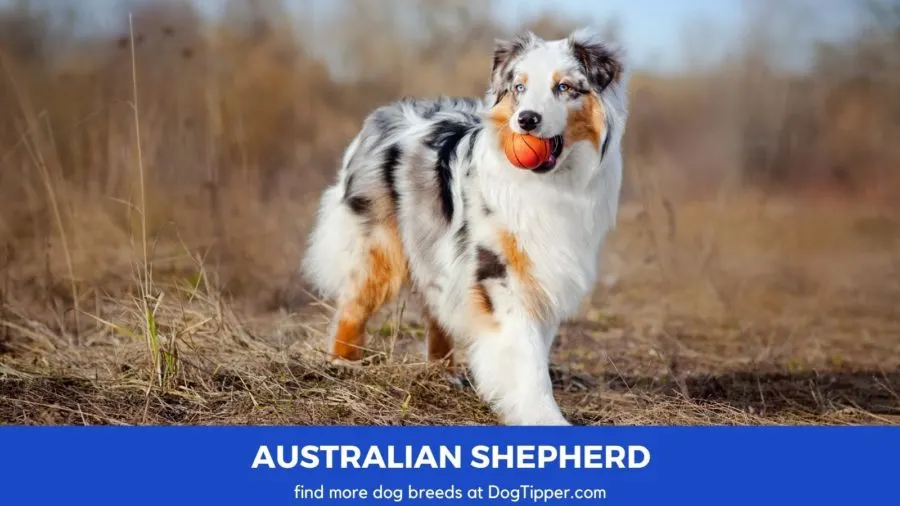
Australian Shepherd
Don’t let the name fool you: the Australian Shepherd is actually an American dog who has become synonymous with the cowboy lifestyle.
Although primarily herding dogs, the breed’s intelligence has also made them efficient service dogs and search and rescue dogs.
Australian Stumpy Tail Cattle Dog
The first dog breed from Australia, like the Heeler this cattle dog was also shares DNA with the Dingo, who were paired with European herding dogs to develop this naturally tailless breed.
Close to extinction by the 1980s, thanks to the Australian National Kennel Council the breed has since rebounded.

Australian Terrier
Small in statute but stout of heart, this breed was developed to be a rodent exterminator, but its charm and cute as a button looks also made the tiny terrier a beloved member of many households.
The first indigenous dog to be recognized and shown in Australia, the tiny terrier would go on to conquer the hearts of Americans upon their arrival in the late 1940s.
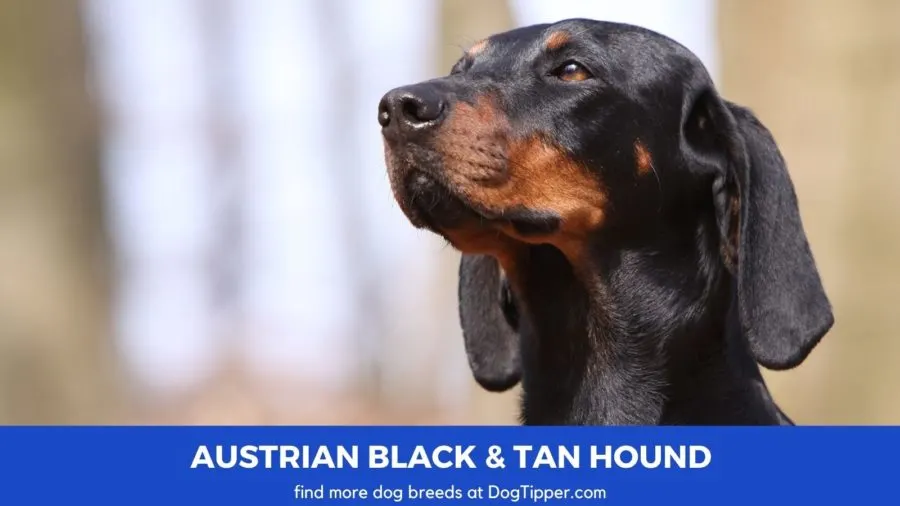
Austrian Black and Tan Hound
A breed whose history is a mystery, these floppy-eared scent hounds, who love the outdoor way of life, are known for tracking hare in alpine regions.
Austrian Black and Tan Hounds only rarely become part of a family, and are seldom seen outside of the country of its origin, Austria.
Austrian Pinscher
Named in tribute to the country of the breed’s beginnings, the Austrian Pinscher (once known as the Austrian Shorthaired Pincher) was on the edge of extinction in the 1970s. Even today the dogs’ population remains low.
Originally utilized as a farm dog, the loyal nature of the breed makes the Austrian Pinscher a reliable guard dog.

Azawakh
A rare sight in the US, this ancient West African breed has a seemingly fragile frame that belies the fact that the Azawakh is a coursing hound, able to capture wild boar and antelope with help from pack mates.
Intelligent and energetic, the Azawakh craves companionship from both their human families and dogs of the same breed.
Explore More Breeds Starting with:
A | B | C | D | E | F | G | H | I | J | K | L | M | N | O | P | R | S | T | V-Z
